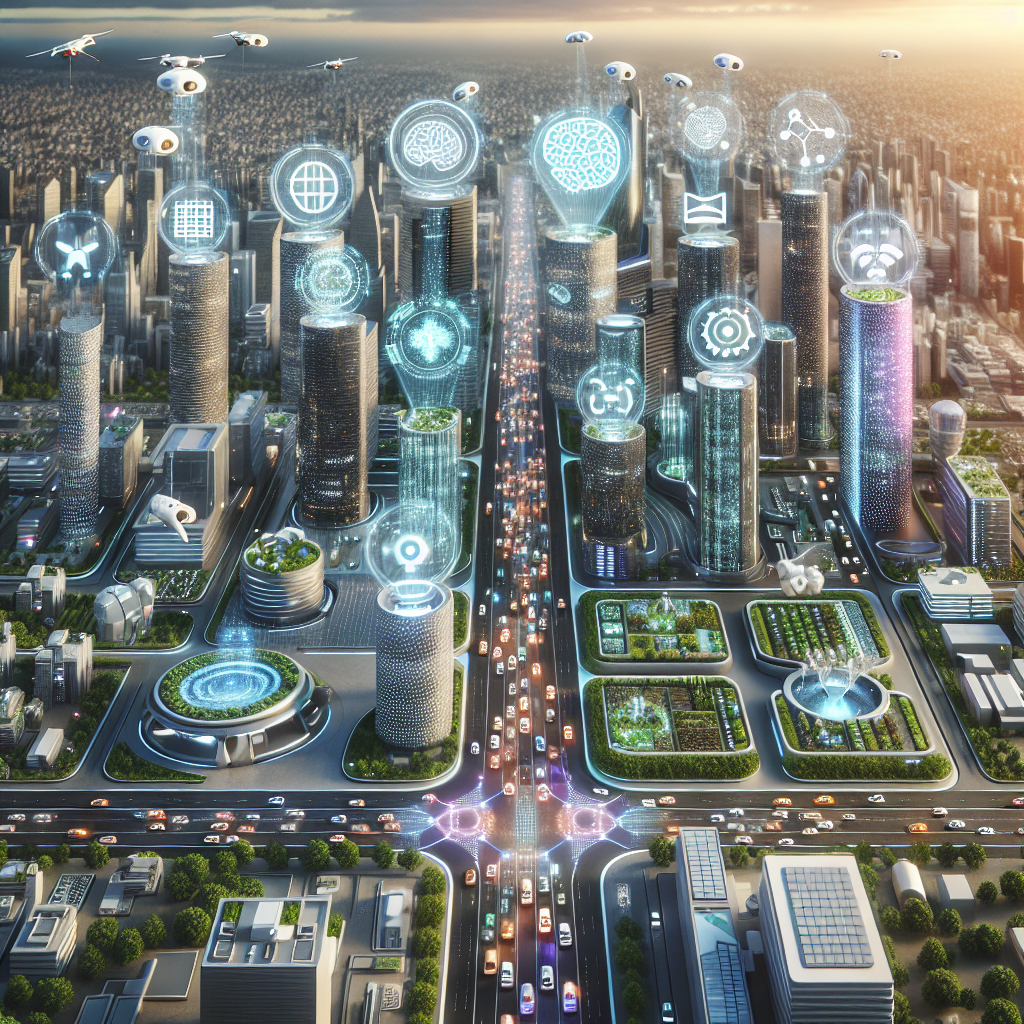The concept of smart cities has been gaining traction in recent years, as cities around the world look for innovative ways to improve efficiency, sustainability, and quality of life for their residents. One of the key technologies driving this transformation is artificial intelligence (AI). By integrating AI into the infrastructure and services of a city, municipalities can harness the power of data and analytics to make better decisions, optimize resources, and deliver services more effectively.
AI-integrated smart cities represent a vision for the future in which technology plays a central role in solving urban challenges and improving the lives of residents. From reducing traffic congestion and air pollution to enhancing public safety and healthcare services, AI has the potential to revolutionize the way cities are managed and experienced. In this article, we will explore the concept of AI-integrated smart cities, the benefits they offer, and the challenges they face.
What are AI-Integrated Smart Cities?
AI-integrated smart cities are urban environments that leverage artificial intelligence technologies to collect, analyze, and act upon data in real-time. By connecting sensors, devices, and infrastructure to AI systems, cities can monitor and manage a wide range of services and utilities, from transportation and energy to public safety and healthcare. This interconnected network of data and AI algorithms enables cities to make informed decisions, automate processes, and deliver services more efficiently.
One of the key features of AI-integrated smart cities is the ability to collect and process vast amounts of data from various sources, such as traffic cameras, environmental sensors, and mobile devices. By analyzing this data in real-time, AI systems can identify patterns, trends, and anomalies that humans may not be able to detect. This enables cities to respond more quickly to changing conditions, optimize resources, and improve the overall quality of life for residents.
Benefits of AI-Integrated Smart Cities
There are numerous benefits to implementing AI in smart cities. Some of the key advantages include:
1. Improved Efficiency: AI systems can optimize the use of resources, such as energy, water, and transportation, leading to cost savings and reduced waste.
2. Enhanced Safety: AI can help cities monitor and respond to security threats, accidents, and emergencies more effectively, improving public safety.
3. Better Decision-Making: By analyzing data in real-time, AI systems can provide city officials with insights and recommendations to make more informed decisions.
4. Sustainable Development: AI-integrated smart cities can help reduce carbon emissions, promote renewable energy sources, and improve overall sustainability.
5. Enhanced Services: AI can improve the quality and delivery of public services, such as healthcare, education, and transportation, making cities more livable for residents.
Challenges of AI-Integrated Smart Cities
While the benefits of AI-integrated smart cities are significant, there are also challenges and concerns that need to be addressed. Some of the key challenges include:
1. Privacy and Security: AI systems collect and analyze vast amounts of data, raising concerns about privacy and data security. Cities need to implement robust measures to protect personal information and prevent unauthorized access.
2. Digital Divide: Not all residents may have access to the technology and digital skills needed to benefit from AI-integrated services, leading to a potential digital divide in smart cities.
3. Ethical Considerations: AI algorithms may exhibit bias or make incorrect decisions, leading to ethical concerns about the impact of AI on society. Cities need to address these issues to ensure fair and equitable outcomes.
4. Infrastructure Investment: Implementing AI in smart cities requires significant investment in sensors, networks, and AI systems, which may be a barrier for some municipalities.
5. Regulatory Framework: There is a lack of standardized regulations and guidelines for AI-integrated smart cities, leading to uncertainty about legal responsibilities and liabilities.
FAQs about AI-Integrated Smart Cities
Q: What technologies are typically used in AI-integrated smart cities?
A: AI-integrated smart cities rely on a combination of technologies, including Internet of Things (IoT) devices, cloud computing, big data analytics, and machine learning algorithms. These technologies work together to collect, process, and analyze data to make informed decisions and automate processes in the city.
Q: How can AI improve transportation in smart cities?
A: AI can help optimize traffic flow, reduce congestion, and improve public transportation services in smart cities. By analyzing real-time data from sensors and traffic cameras, AI systems can provide insights and recommendations to city officials to optimize routes, schedules, and resources.
Q: What are some examples of AI-integrated smart city projects?
A: There are several examples of AI-integrated smart city projects around the world. For instance, Singapore has implemented AI-powered traffic management systems to reduce congestion and improve road safety. Barcelona has deployed smart streetlights that adjust lighting levels based on pedestrian traffic patterns and weather conditions.
Q: How can residents benefit from AI-integrated smart cities?
A: Residents can benefit from AI-integrated smart cities in various ways, such as improved public services, enhanced safety, and better quality of life. For example, AI systems can help residents access real-time information about public transportation schedules, air quality levels, and emergency services.
Q: What are the potential risks of AI-integrated smart cities?
A: Some potential risks of AI-integrated smart cities include privacy concerns, security vulnerabilities, ethical issues, and potential job displacement due to automation. Cities need to address these risks through robust data protection measures, ethical guidelines for AI use, and training programs for workers to adapt to the changing technological landscape.
In conclusion, AI-integrated smart cities represent a vision for the future in which technology plays a central role in addressing urban challenges and enhancing the quality of life for residents. By leveraging the power of artificial intelligence, cities can optimize resources, improve efficiency, and deliver services more effectively. While there are challenges and risks associated with AI-integrated smart cities, the potential benefits are significant, making it an exciting and promising field for urban development.

